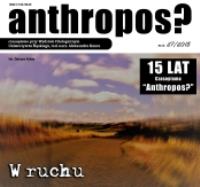Przejście graniczne między Wschodem a Zachodem. Fascynacja japońską kulturą w filmach Doris Dörrie
Border Crossing Between East and West. Fascination with Japanese Culture in Doris Dörrie's Movies
Author(s): Natalia GrabkaSubject(s): Anthropology, Cultural Anthropology / Ethnology, Culture and social structure , Sociology of Culture, Film / Cinema / Cinematography, Sociology of Politics
Published by: Instytut Nauk o Kulturze i Studiów Interdyscyplinarnych - Wydział Filologiczny - Uniwersytet Śląski
Keywords: border; Japanese culture; Doris Dörrie's movies;
Summary/Abstract: This article is an attempt to analyze two films of a German director Doris Dörrie: Kirschblüten - Hanami (2008) and Grüße aus Fukushima (2016), created with the fascination by Japanese culture. This fascination, which is important in Wolfgang Welsch's theories becomes a point of departure for the transcultural interpretation. In this context, the meeting of cultures is not a binary opposition, but includes the entanglement of both sides in the complex cultural networks. And the natural transcultural mind that Wolfgang Welsch sees in the Japanese, can also characterize the German director. In these two films the author looks for various elements representing different cultures, accepting the surface character of research, which according to Krystyna Wilkoszewska takes into account the surface knowledge of another culture, if it leads to an in-depth study of our culture. The border crossing being showing one's own and the other as two sides of the same coin, resembles the Japanese-painted face of a buto dancer, which contrasts with his black, braided hair, which in turn is mediated from the aesthetics of expressionism. Differences between characters and cultures are therefore not a contrast between two homogeneous cultures but inside the transcultural network. In the transcultural network the journey of film characters takes place through the butoh dance process, which is intertwined with the road symbolism. Also the name of the butoh dance reveals a connection with traversing the road. The word butoh was created from two complex ideograms: "bu" - meaning dance, and "toh" - means a step. The step of the butoh dancer Yu from Kirschblüten - Hanami or the elegant geisha Satomi from Grüße aus Fukushima is therefore a step of traversing Europeans - Rudi and Marie – trying to find themselves and rebuild their lives.
Journal: Anthropos?
- Issue Year: 2018
- Issue No: 27
- Page Range: 112-123
- Page Count: 12
- Language: Polish

